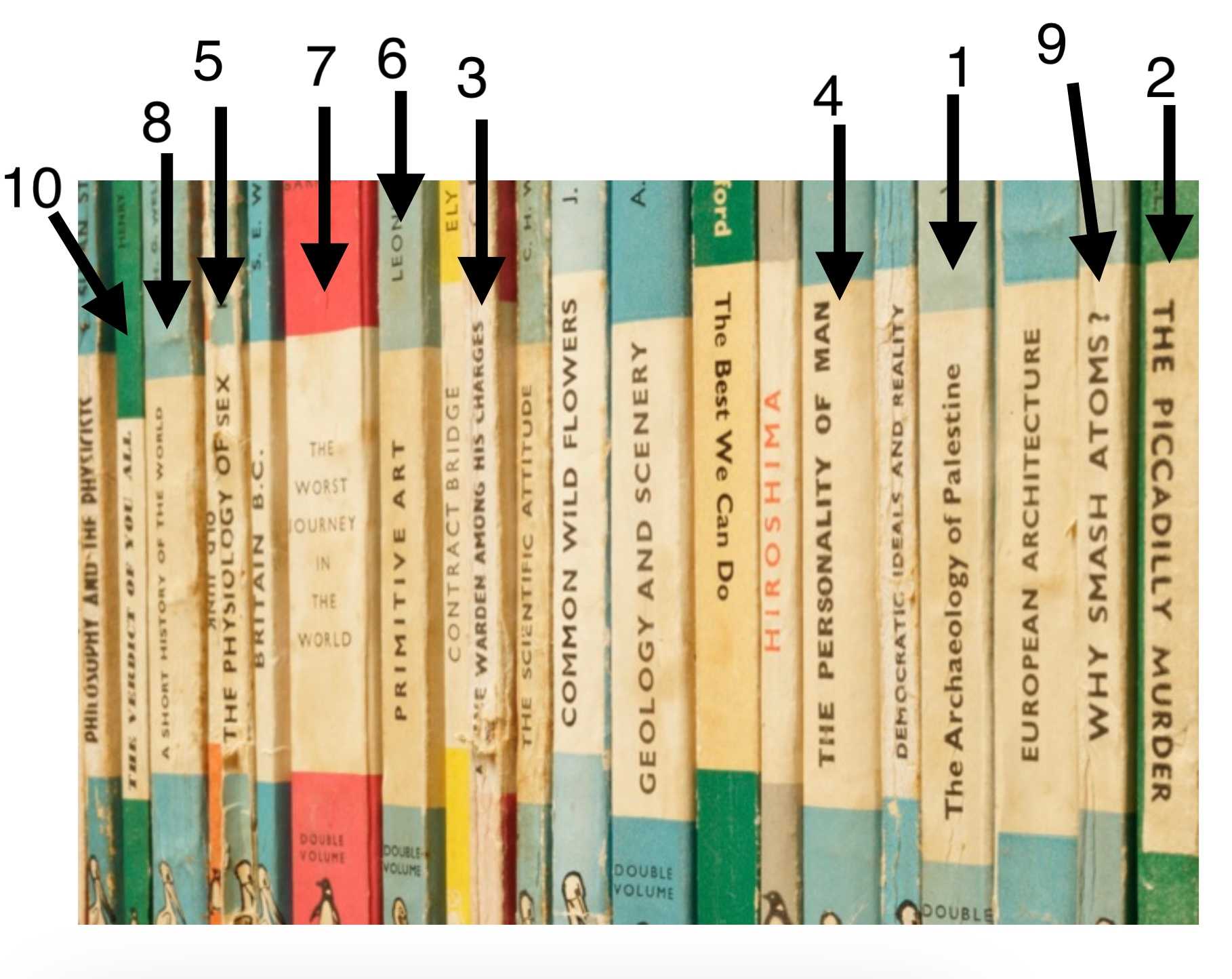
Who Wrote Which Vintage Book? Trivia Quiz
For this quiz, identify the author of the fiction and non-fiction books in the numbered sequence.
A label quiz
by Trivia_Fan54.
Estimated time: 3 mins.


| 1. |
| 2. |
| 3. |
| 4. |
| 5. |
| 6. |
| 7. |
| 8. |
| 9. |
| 10. |